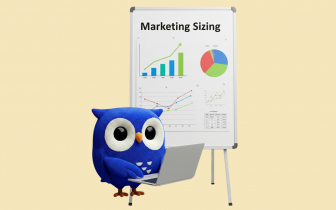The Science Behind How People Read Online

There are 1.3 billion sites on the internet. Based on this, simply imagine the vast number of web pages that are there.
So, how do you ensure people stay on your site and check your pages?
It turns out that perfectly written content is not always enough. You need to know the science behind how people read online. That includes reading patterns, article or page structuring, and more.
Does this sound new to you? No worries, we’ve checked some reports, data, and actionable advice to help you out!
How people interact with web pages
Let’s start with some important statistics.
Time reports that 55% of online users spend less than 15 seconds on the page. Do you notice an article that people share often? That does not mean people read from cover to cover. Such content usually demonstrates 20% of the total engaged time.
Moving further, people scan web pages. Normally, we read 20% to 28% of the content. Simply think about how you interact with the web pages. We think you won’t read the full post in the most cases.
So, how do you grab people’s attention and ensure people stay longer on your site?
Even if you don’t know about the reading patterns (we will talk about them in the next section), you can still create some “anchors” for visitors.
You should add longer words to sentences that carry important information. People skip shorter words more often and tend to focus on longer ones. That’s what the Parallel Letter Recognition model states.
It also shares that we concentrate on a word for about 200-250ms and then jump to other words. Usually, we move forward while making those jumps (or, scientifically, saccades), but sometimes it can be a backward movement.
Saccadic eye movements (“Word recognition” by Kevin Larson)
Based on the given information, we can make some assumptions about people's interaction with web pages:
- People want to find answers to their questions,
- People want on-page content to be readable,
- People can see the information they need quickly and easily.
If your web page fits these requirements, you can expect users to stay longer on your page. Moreover, keeping all the on-page elements in mind can make readers explore your site further.
The most popular reading patterns
But how do people actually read online content? We have some extensive results, thanks to the research the Nielsen Norman Group has been carrying out for 13 years.
Of course, technology has changed the way we interact with web pages.
The “liquid layout” gets lost in history, given that sites use responsive design.
1. Zig zag pattern
The boost of comparison tables and zig-zag design dictate new rules, too. If we talk about the zig-zag view, people will process the on-page content in the lawn-mover pattern.
- We start reading from the left top corner and move to the right,
- Then we go down and scan to the left, then jump to the lower row, and repeat the action.
You can keep this pattern in mind if you create landing pages for selling goods. The following picture shows that huge brands apply this layout on their sites.
2. F-pattern
Another popular reading scheme is the F-pattern. The name refers to the image the readers’ eyes make when looking at the page.
This pattern will be more applicable to blog posts and long-form content. People tend to read a couple of the horizontal strings at the very beginning of the article. Then they go down the page, read the next string - usually shorter in size, and keep scanning downwards.
That forms the so-called F-pattern.
F-pattern (by Nielsen Norman Group)
As you can see, it’s better to place the main information about your article at the beginning of the post. Make sure you cover what’s inside the article to address people’s expectations. That will be your best chance to hook them.
3. Layer-cake pattern
That’s the pattern you use the most often (that’s our assumption, and you will soon understand why).
There is tons of information around us, and we are trying to stay productive and not waste time. That’s why we scan and access content based on the headings. And that’s what layer-cake pattern is about.
Let’s imagine you need to read five-plus articles to find some valuable data. Will you read all of them in full? We highly doubt that.
In fact, the study has shown internet users spend more time looking at the headings. Only if some of them match their search intent they will read them further.
Layer-cake pattern (by Nielsen Norman Group)
As you understand, incorporating headings and subheadings (H2, H3, H4, etc.) in your texts will help readers. It’ll be much easier for them to detect if your content fits them.
Name your heading correctly (use keywords that match the user’s intent if possible) to fit readers’ needs.
4. Spotted pattern
That’s another widespread way people take content online. In this case, they focus on the most attractive elements of the text.
- Bullet lists, bold text, words of different color - that’s what readers can focus on.
- Another option is words that readers expect to find within your content or correlate with their goal.
Often, the spotted pattern comes hand in hand with other patterns like the F-pattern or layer-cake pattern. This option of content perception allows readers to get further information.
For instance, in this example, the reader scans headings (layer-cake pattern) and then focuses on the bullet-point list (spotted pattern).
Spotted pattern (by Nielsen Norman Group)
This way, smart web designers and content marketers will understand how to highlight the key moments.
If we talk from the content perspective, add relevant keywords to accompany your main keyword. Put phrases with keywords in them in bold or bold + italic to make them more visible.
How to make people stay longer on your page
Of course, there are more patterns. But these, undoubtedly, are the most widespread ones. And now, as we know how people read online pages, we can optimize them respectively.
How can you boost your page usability?
- Legible design,
- Readable content,
- Clear structure.
These are general guidelines to make your pages pleasantly looking. That’s the first stage to keeping users on your site.
As we’ve seen the scientific proof that people scan pages, you know what element must be present on your page. To “hook” users, don’t forget about including:
- Headings and subheadings,
- Related images,
- Links,
- Edited phrases (put in bold or italic),
- Lists.
Also, take into consideration what page type you are working on. Based on this, ensure that the layout contains all the necessary information and elements.
For instance, if we talk about the contact page, it should include the address, email, links to social media, etc. That said, you need to include information users are expecting to find on this page.
Also, do not overwhelm your readers with complicated language. In fact, unfamiliar words slow down online users.
One of the practices popular bloggers use is writing in clear and concise language. Employ special tools to control your text clarity. For example, it can be a Flesch score rate that should ideally be 80-90.
Also, remember about the sentences you use. We’ve mentioned this tip in one of our previous articles. But we gladly share it once more.
Do not write in long, complicated sentences. Your paragraph is better to contain five or fewer sentences.
Your best option is to make short and clear paragraphs. Mix long (15 to 20 words) with two short or middle sentences. Each paragraph better consists of three to four sentences.
Some paragraphs can even contain one sentence!
Yes, just like we did right now. A one-sentence paragraph can attract readers attention. So, you can describe some piece of important information in it.
With such sentence and paragraph structure, your texts will be more readable. Even if you have to use complex or unknown words, your visitors will still get information in an understandable manner.
Also, by cleverly combining paragraphs together with lists and visuals, you create a reading rhythm for your clients. You can vary the rhythm by adding headings, punctuation marks, breaks, dashes, etc.
Conclusion
As you can see, 20+ years of studying how people read online bring some eye-opening results.
Firstly, users scan your content. It is very, very rare when someone digs into the full content of the web page. Given that, you need to understand the main reading patterns.
After you plan what will be on your page (blog post, goods, product descriptions, etc.), think of how people will scan the page. Will it be an F-pattern? Layer-cake? Build your page structure accordingly.
But the overall golden rules for your online content are:
- Using headings and subheadings,
- Using clear and concise language,
- Highlighting the main points or keyphrases (the ones people expect to find on the page),
- Writing in not-too-long paragraphs,
- Combining long and short sentences,
- Using modern and understandable design on your pages.
We hope these pieces of advice based on the long-term research and also our practical experience will help you out.
Do you use the reading patterns on your site? How effective are they? Share your thoughts in the comments below!






